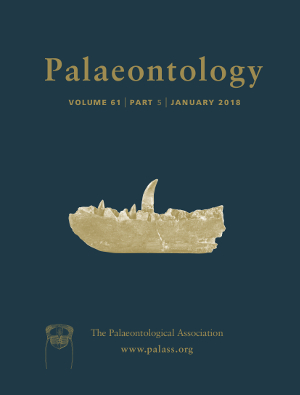Reg. Charity No. 1168330

One of the most striking features of aetosaurs is the possession of an extensive bony armour composed of dorsal, ventral and appendicular osteoderms. With the purpose of establishing the main histological changes during ontogeny and the degree of histological variation within the armour, we analysed the bone histology of dorsal (paramedian and lateral), ventral and appendicular osteoderms from different taxa from the Late Triassic of South America, including Aetosauroides scagliai, Aetobarbakinoides brasiliensis and Neoaetosauroides engaeus. Histological data support an intramembranous origin for osteoderms. Nevertheless, evidence for metaplastic ossification (i.e. structural fibres) at advanced ontogenetic stages, in at least some elements, is also present. A variant type of parallel fibred bone, which we have named ‘crossed parallel fibred bone’, is characterized for aetosaurs. In this pseudosuchian group, osteoderms exhibit very important microstructural changes during ontogeny, which can be useful for determining ontogenetic stages from isolated elements. Histological data suggest a relatively early onset of sexual maturity among aetosaurs. Microanatomical analysis from different taxa reveal that having high values of compactness is the plesiomorphic condition for Aetosauria. The notably increased compactness of the osteoderms does not appear to be related to size, ontogeny, sex or reproductive status of the individuals. Although a high degree of compactness of osteoderms and other bones has been considered as evidence for an aquatic lifestyle in vertebrates, such an inference contradicts the current concept of a fully terrestrial lifestyle in aetosaurs.